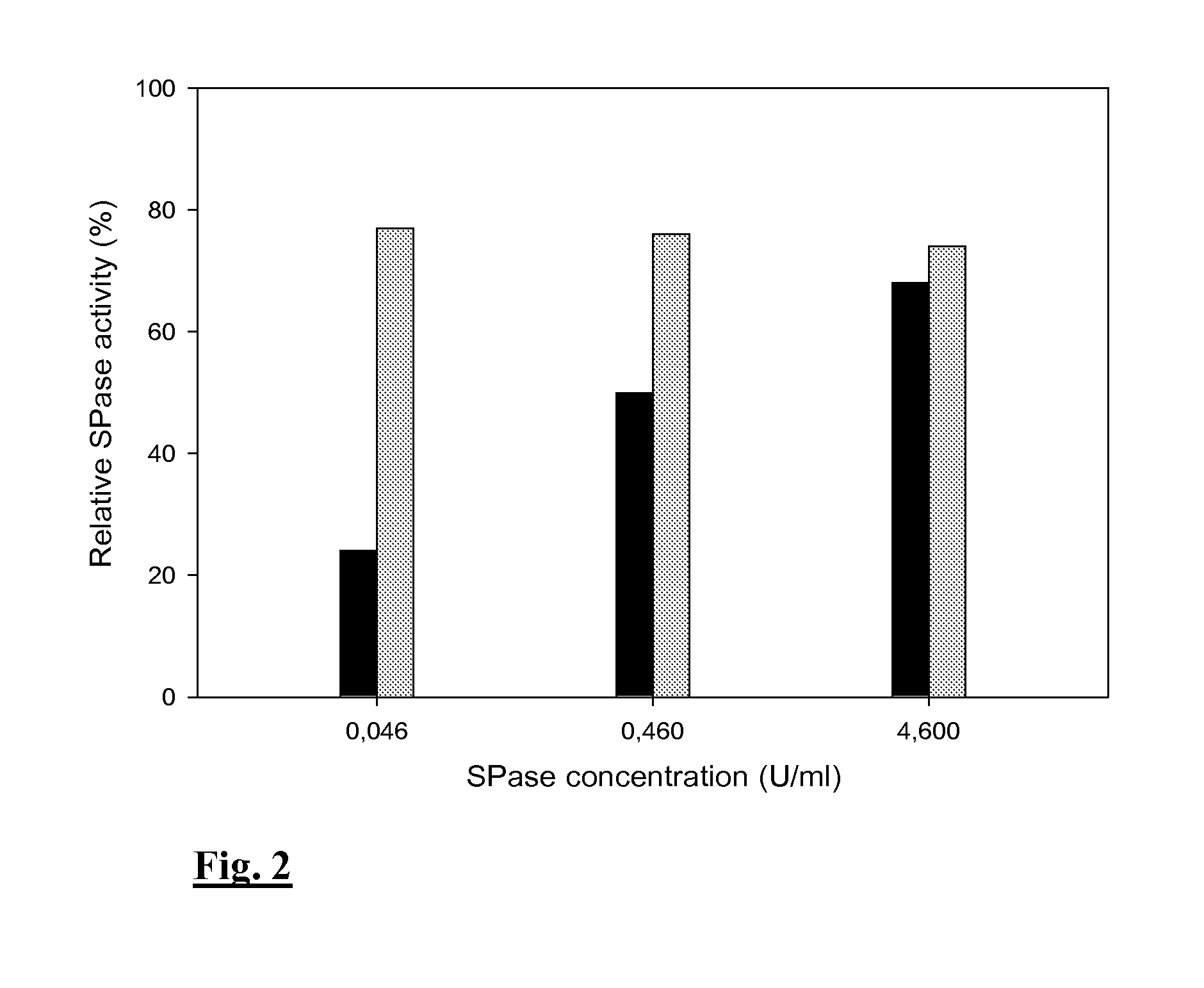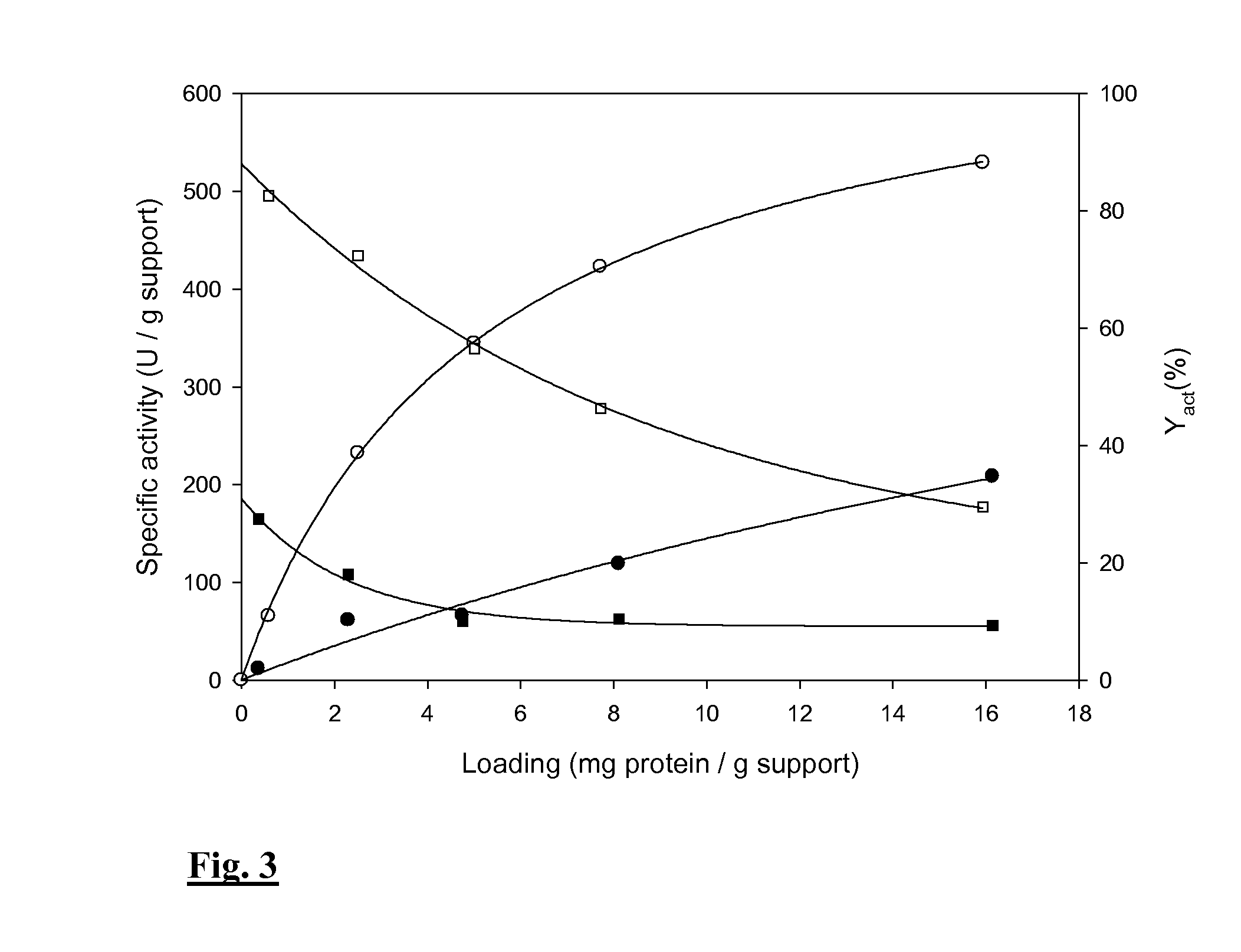Thermostable sucrose phosphorylase
a technology of sucrose phosphorylase and sucrose, which is applied in the field of sucrose phosphorylase, can solve the problems of inability to exploit thermophilic organisms such as spase enzymes, and the stability of these enzyme variants is still too low
- Summary
- Abstract
- Description
- Claims
- Application Information
AI Technical Summary
Benefits of technology
Problems solved by technology
Method used
Image
Examples
example 1
Immobilizing the SPase Via the Epoxy-Activated Enzyme Carrier or the CLEA Technology
[0044]Materials and Methods
[0045]Materials for Immobilization of SPase
[0046]Amino-epoxy (EC-HFA) Sepabeads supports were kindly provided by Resindion S.R.L (Mitsubishi Chemical Corporation).
[0047]Materials for CLEAs
[0048]Tert-butyl alcohol, glutaraldehyde, and sodium borohydride were purchased from Aldrich-Chemie, Fisher and Acros, respectively. All other reagents were purchased from Sigma-Aldrich.
[0049]Expression and Purification of SPase
[0050]E. coli XL10-Gold cells transformed with the constitutive expression plasmid pCXshP34_BaSP were cultivated in 1-1 shaken flasks at 37° C. containing LB medium supplemented with 100 mg 1−1 ampicillin. After 8 h of expression, the cells were harvested by centrifugation (7000 rpm, 4° C., 20 min), suspended in lysis buffer NPI-10 (Qiagen) and disrupted by sonication. Cell debris was removed by centrifugation (12 000 rpm, 4° C., 30 min) The N-terminal 6-His tagged ...
example 2
Mutating the SPase to Further Increase its Stability
[0119]Materials, Methods and Results
[0120]Mutations were introduced by High Fidelity PCR followed by digestion with DpnI (New England Biolabs). The enzyme variants were produced and purified as described for the wild-type enzyme. Their thermostability was assayed by incubating 85 μg / ml of enzyme for 16 h at 60° C., after which the residual activity was determined. The enzyme variants displayed an activity that corresponds to at least 80% of the wild-type activity, illustrating that their increased stability did not come at the expense of activity.
[0121]As can be seen in Table 2, introducing mutations R393N, Q460E / E485H, D445P / D446T or D445 / D446G, or Q331E increases the enzyme's stability considerably. Furthermore, combining all of these mutations results in an enzyme variant that is completely stable for 16 h at 60° C.
TABLE 2EnzymeMutationsResidual activity (%)wild-type—79variant AR393N81variant BQ460E / E485H84variant C or C′D445P / D...
PUM
| Property | Measurement | Unit |
|---|---|---|
| temperature | aaaaa | aaaaa |
| temperature | aaaaa | aaaaa |
| pH | aaaaa | aaaaa |
Abstract
Description
Claims
Application Information
 Login to View More
Login to View More - R&D
- Intellectual Property
- Life Sciences
- Materials
- Tech Scout
- Unparalleled Data Quality
- Higher Quality Content
- 60% Fewer Hallucinations
Browse by: Latest US Patents, China's latest patents, Technical Efficacy Thesaurus, Application Domain, Technology Topic, Popular Technical Reports.
© 2025 PatSnap. All rights reserved.Legal|Privacy policy|Modern Slavery Act Transparency Statement|Sitemap|About US| Contact US: help@patsnap.com



